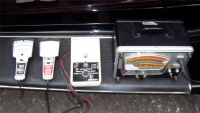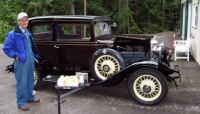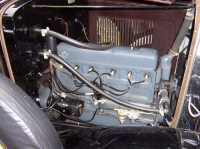|
1931
Engine Tune Up - Page 1 Some information about the dwell and timing on a Chev six cylinder engine. |
|
 Today
we got four dwell meters together with the help of my buddy Dick Olson.
We have been working on the timing of his 1931 Sport Coupe and my 1931
Five Passenger Coupe. Today
we got four dwell meters together with the help of my buddy Dick Olson.
We have been working on the timing of his 1931 Sport Coupe and my 1931
Five Passenger Coupe.
We had found that the point gap setting didn't seem to line up with the dwell readings that we expected. So we became suspicious of the calibration of our dwell meter. We thought that we might compare this to as many meters as possible on the same engine.
|
|
|
<Click on any photo to enlarge it> |
|
|
Tune up specifications for an early 30's Chevrolet The recommended settings that is listed in most 1931 Shop Manuals is Spark Plug gap .024 Ignition Points gap .018 Timing 12 degrees BTDC Dwell - not listed in 1931 The
experience of most VCCA
members is that these engines run much better at the following settings: The order of your tune-up should
be: SparkPlugs |
|
|
CONCLUSION: The VCCA-member tune-up settings have been found to be the best
combination. This gives us power at cruising speed, easier starting,
smoother idle, better throttle response, and probably more miles per
gallon of gas.
Note: The VCCA does not officially sanction any of these recommendations, and they are considered to be "member suggestions" only. |
|
Dwell Meter Comparisons at Point Gap of .018 Dixson 1501 --> 37 degrees Dixson 1376 --> 28 degrees Dixson Pro Tester 10 --> 32 degrees Sears 244.21032 --> 34 degrees |
 |
| CONCLUSION: Dwell meters have a lot of inaccuracy in them. The Sears meter was the most trustworthy since it allowed the user to "zero" the needle twice, once at rest, and again with a charge on it. We were shooting for 36 degrees and decided to leave the ignition gap alone since it was reading 34 degrees with the Sears meter. This was considered well within an acceptable margin of error. |
 |
| Photos by Bill Barker | |

